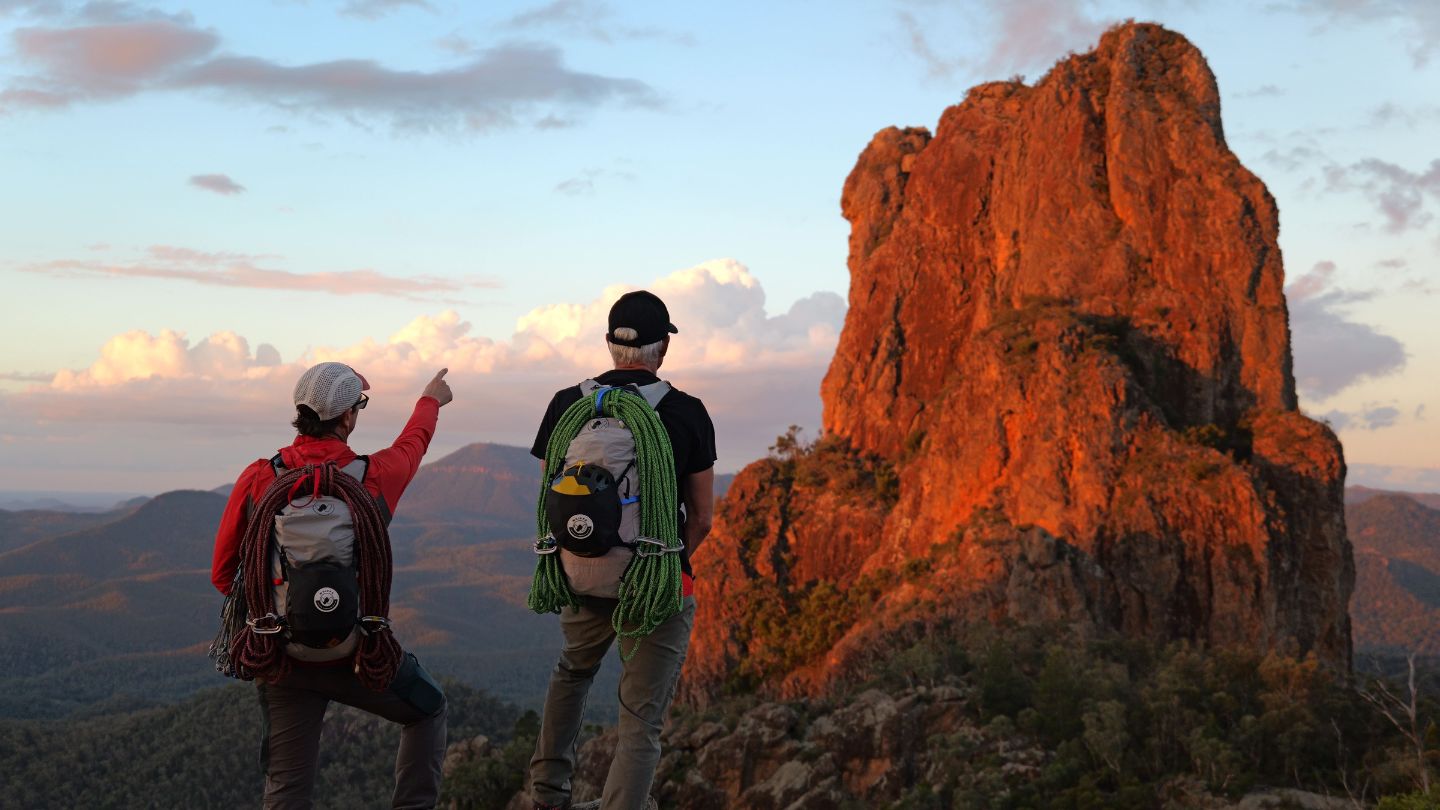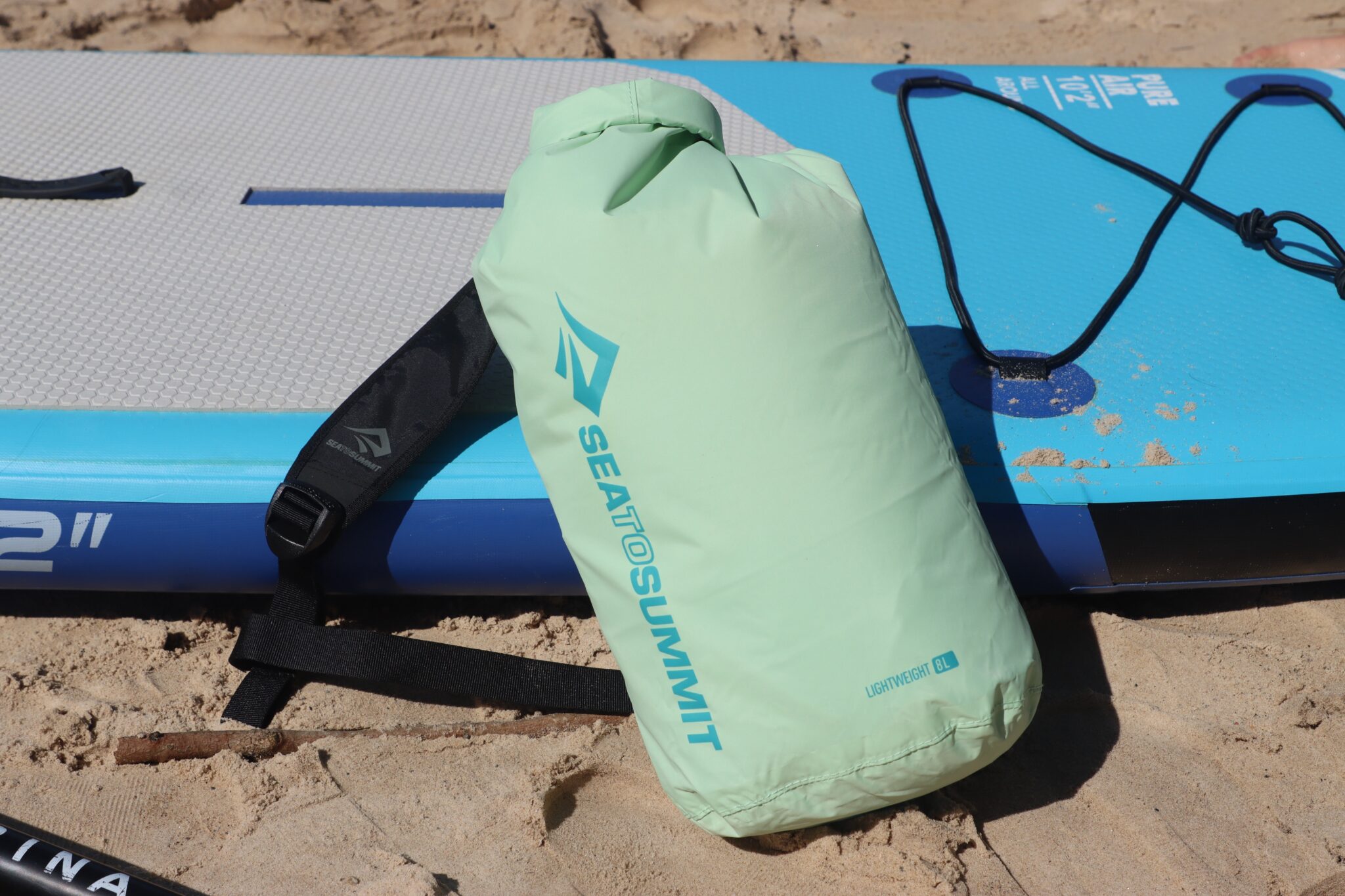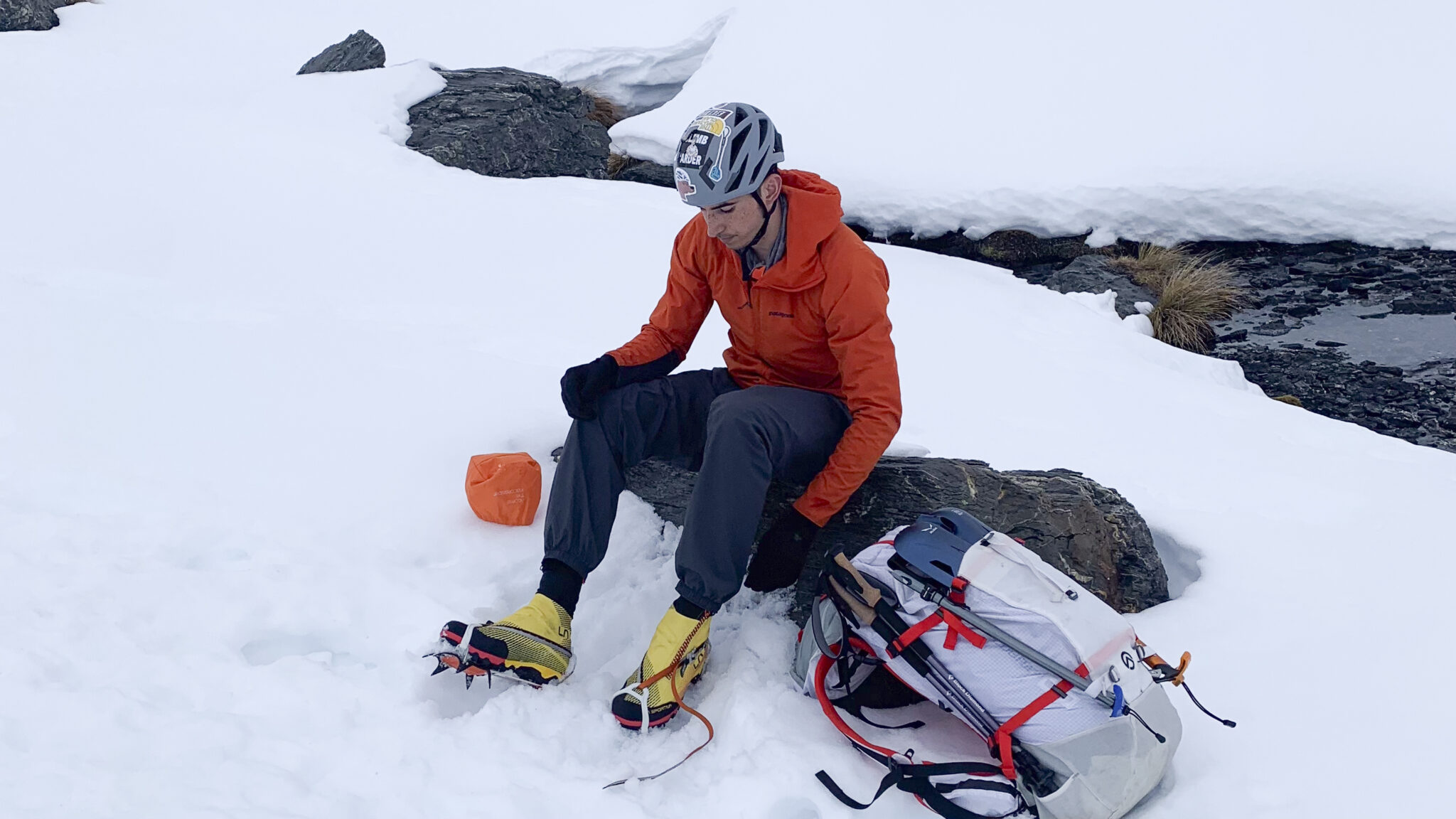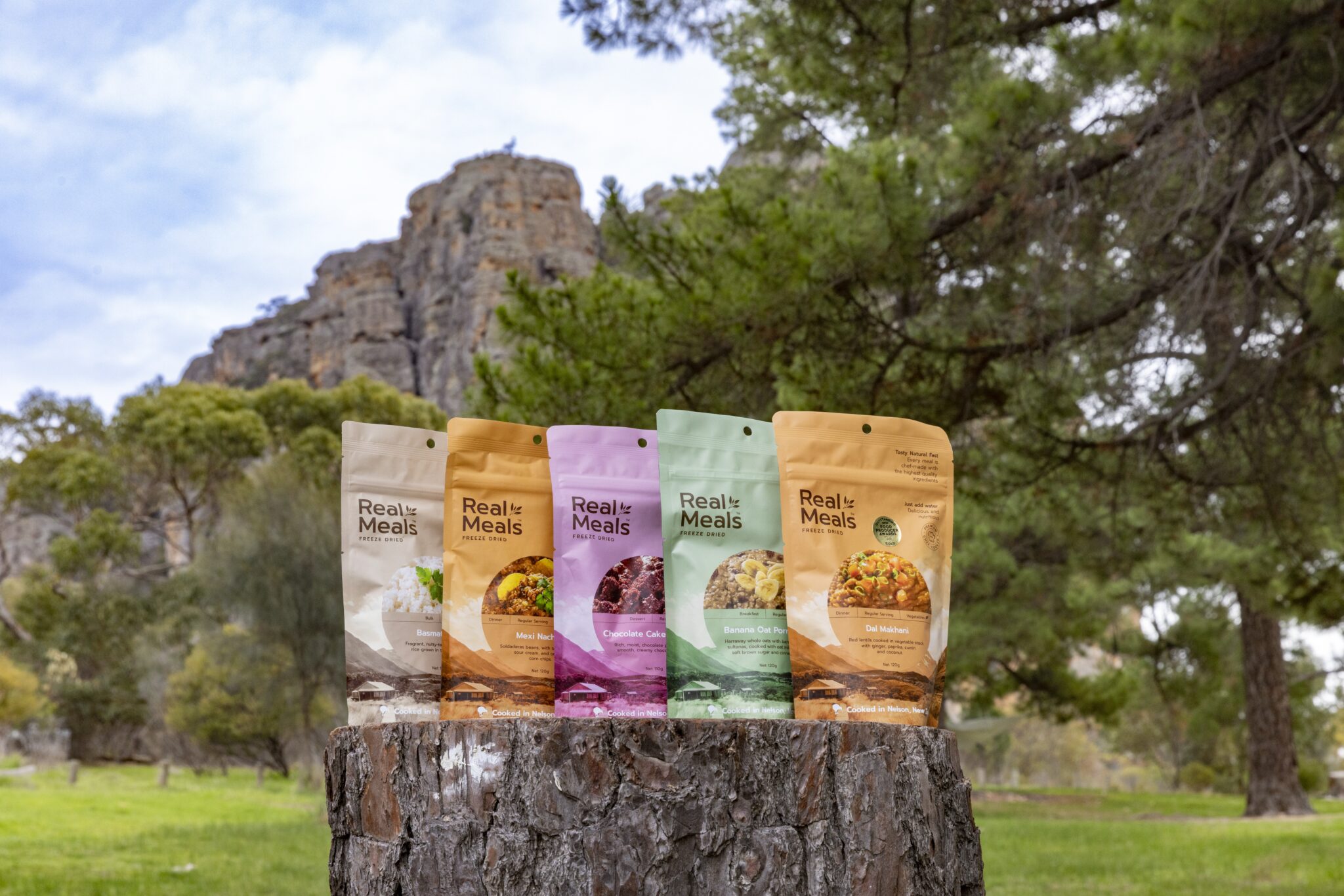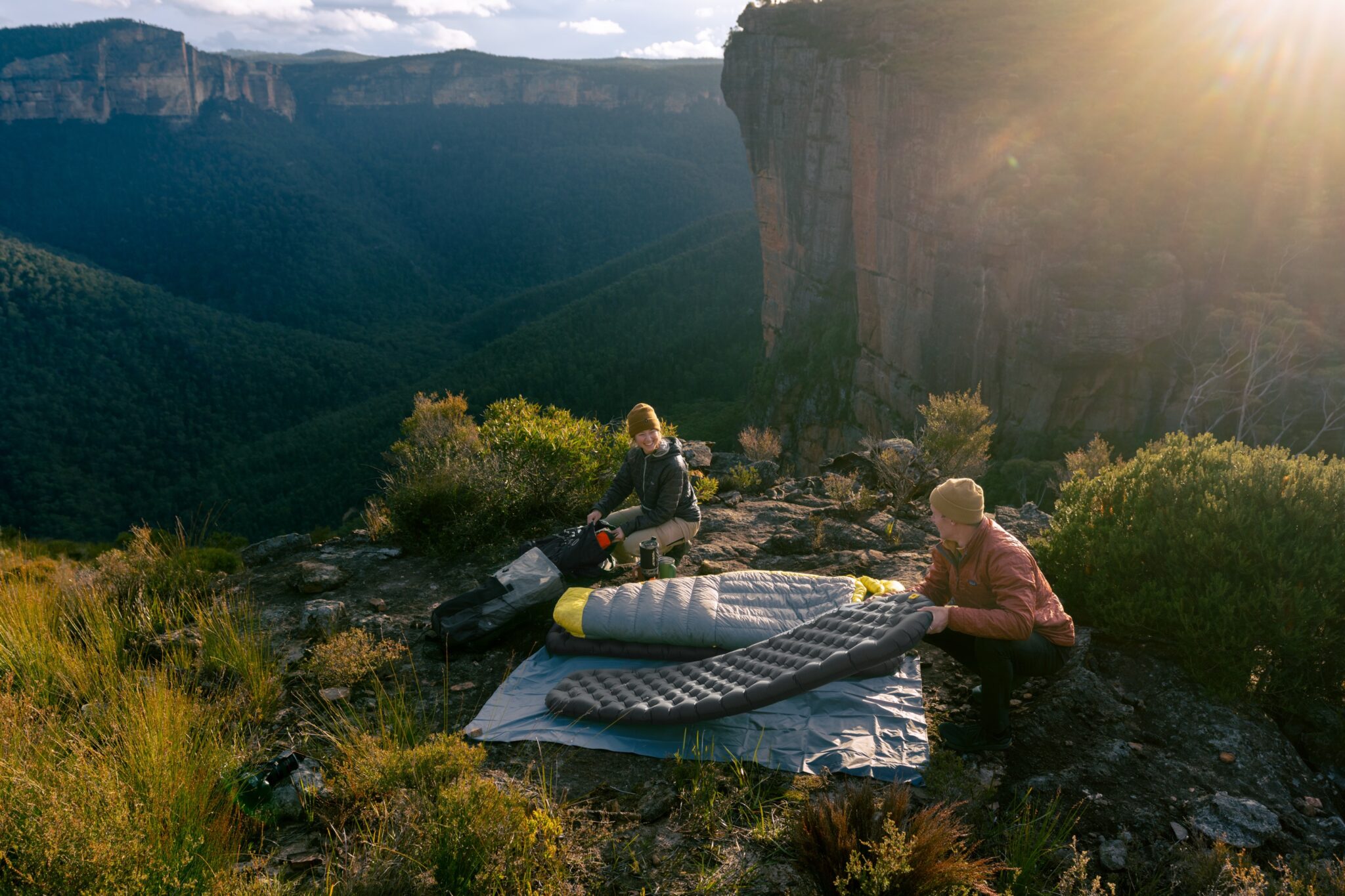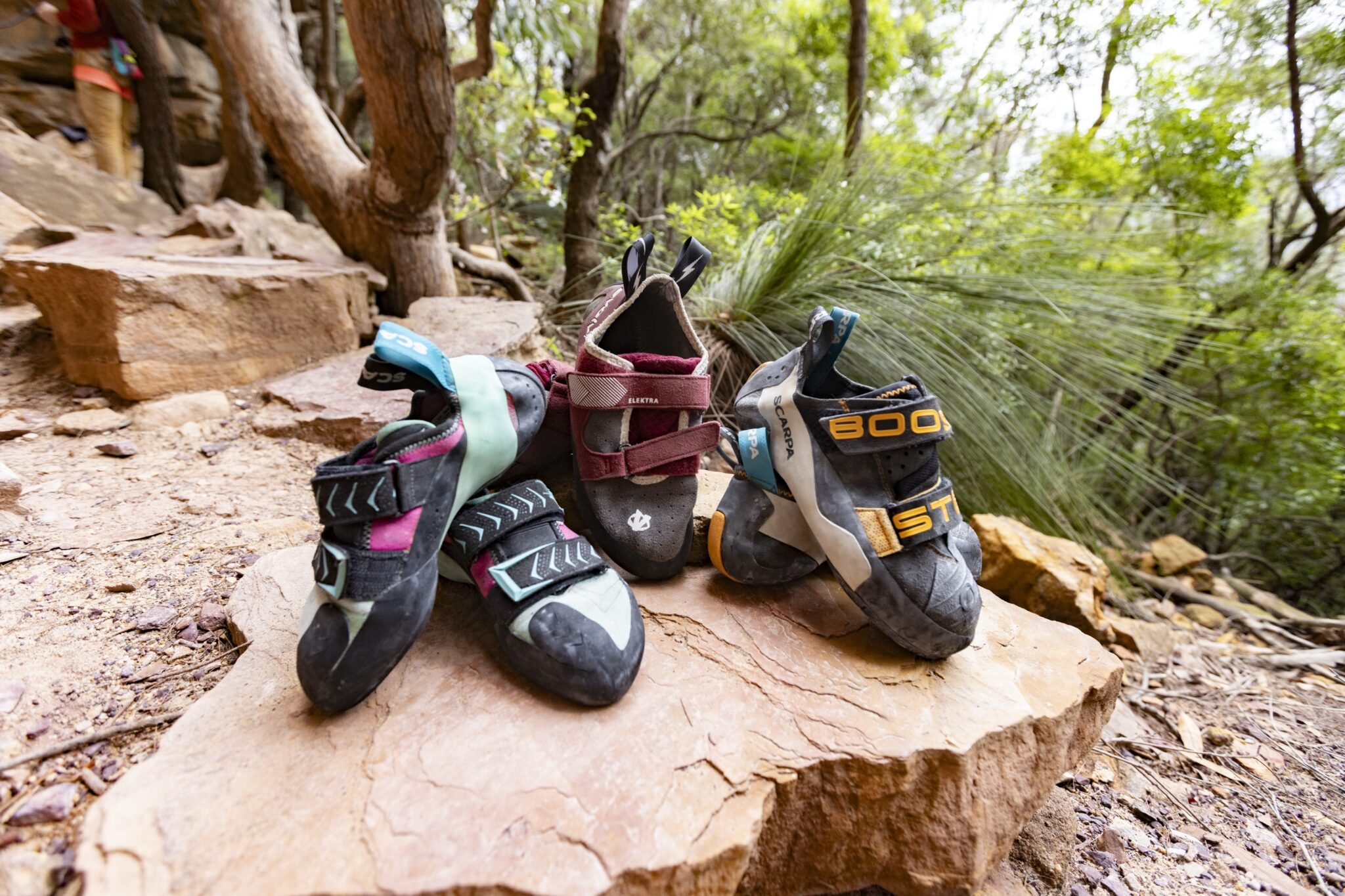Whippa Packs – Australia’s Ultralight Gear Brand Making Big Moves
Built in the Blue Mountains, Whippa is stitching a new standard for ultralight climbing and mountaineering packs
In Behind The Wall, we lift the veil on the mystery that surrounds the climbing industry by introducing you to some of our favourite entrepreneurs who have turned their passion for climbing into their livelihoods. From climbers creating specialty products to brands, businesses and everything in between, our industry truly is a treasure trove of untold stories. This issue Brooke takes us Behind The Wall as she chats with Blue Mountains based brand, Whippa.
If you’ve ever spent time in Katoomba, you’ll know the building. The iconic red, white and black Summit Gear shopfront has been a fixture on the high street since the early 1980s and is as much a part of the Blue Mountains landscape as the cliffs, the climbs, and the underdressed tourists wondering why it’s so cold.
I’d been inside more times than I care to admit, grabbing dry bags for canyoning trips, replacing carabiners I’d trashed, and eyeing off random gear I absolutely didn’t need (but obviously still bought). I knew their packs were made on-site. I just hadn’t thought much about what that actually meant — or how rare that really is these days.
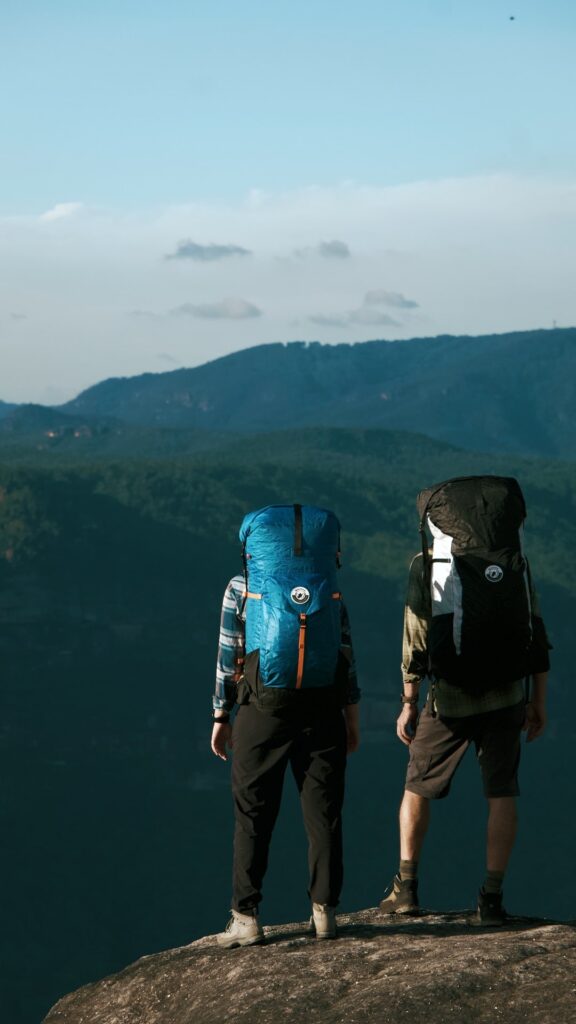
That all changed when I caught up with Robert Inshaw, who has owned Summit Gear since 2015, and got a behind-the-scenes look at how things are done.
Upstairs, away from the shop floor, Summit Gear is part thriving workshop, part museum to Aussie adventure. Swatches of fabric spill out of boxes piled floor to ceiling, prototypes and designs lay across the desks, and seamstresses are hard at work, building every pack from scratch.
Adorning the hallways in between are pieces of history: ’90s bushwalking beasts, battered canyoning packs still hanging tough, and custom-made rescue packs built for police, ambulance, and search and rescue crews.
But while the past still hangs proudly from the rafters, I was there to talk about the future. And it comes stitched under a new name: Whippa — Summit Gear’s ultralight pack brand, which is already making waves among climbers and mountaineers.
Lighter, Stronger, Better
Whippa wasn’t born in a boardroom. It started with a helicopter.
CareFlight approached Summit Gear needing lighter medical packs; their helicopters were exceeding weight limits. That request led Robert to sourcing cutting-edge, ultralight, and waterproof fabrics, including abrasion-resistant Dyneema composites and Ultra 200X laminates.
Around the same time, Robert was planning a mountaineering trip in Europe. Frustrated at not finding a lightweight, durable 35-litre pack with all the features he wanted, he figured — why not make one himself?
“I own a company that makes packs. Let’s just build one,” he explains. “That prototype became the Solitary 35 and I ended up climbing the Matterhorn with it.”
On the way to the summit, hikers and climbers kept stopping him to ask where they could get one. It was a lightbulb moment — maybe he was onto something.

That was 2022. Since then, Whippa has grown organically, designing packs for hikers, climbers, canyoners, and ski mountaineers, each one purpose-built to be Lighter. Stronger. Better.
This mission, which is adorned on every pack, guides every design decision.
“A lot of ultralight packs strip out features that actually make a pack work — things like load lifters or a decent frame,” Robert says. “We’re not interested in that. It still has to carry well. It still has to last.”
Unlike many ultralight packs, Whippa doesn’t sacrifice structure for weight. Every pack has a carefully cored frame that balances comfort, durability, and lightness. Fully taped seams keep things weatherproof, and larger hipbelt pockets mean you can actually stash more than a muesli bar.
When I picked up an Overland 60 during my visit, one of Whippa’s popular larger hiking packs, it wasn’t just the weight that stood out. It was how solid it felt — a pack that was built light, but built properly.
But it’s not just the design that sets Whippa apart. It’s the relentless real-world testing that means these are packs you can trust to go the distance — whether that’s smashing out a multi in the Blueies or chasing powder on some far-flung mountain peak.
Local guides and adventurers, plus Summit Gear’s own staff, put the packs through their paces, providing an ongoing feedback loop on how they perform out in the field. And because every pack is made to order on-site, improvements are always in motion, not stuck waiting for the next production run.
Partnering with Allie Pepper
One of Whippa’s latest collaborations is with local mountaineering legend Allie (Alessandra) Pepper, who is also based in the Blue Mountains and is currently on a mission to climb the true summits of all 14 of the world’s 8000-metre peaks without additional oxygen.
“I saw an Instagram reel she posted where she was using a lightweight pack,” Robert said. “And I just thought — this is ridiculous. Here she is, doing amazing things. She’s based in the Blue Mountains. And we’re a company building these really cool packs. Why the hell are we not working together?”
Robert reached out, and the rest is history. Together, they developed the Alpine AP 50 Ultralight Mountaineering Pack — a high-altitude pack built for serious expeditions, balancing weight, durability, and weatherproof features without cutting corners.
Ali’s feedback pushed Whippa even further. Game-changing details, like secure internal clips for valuables, roll-top closures that can handle heavy snow, and accessible external pockets, came straight from her real-world experience on 8000-metre peaks.
The collaboration didn’t stop there either. Whippa has since built a 70-litre version, and also developed the Sherpa 90 — a scaled-up expedition pack for Allie’s partner Mikel.
“For that one, we took our Wollemi 90 hiking pack as inspiration, turned it into a mountaineering pack and called it the Sherpa,” Robert explains. “And he just loves it. It’s already been used on K2 and Cho Oyu, and we’ve had orders from places like New Zealand, from people wanting a large capacity pack that can handle it all.”
Supporting the Local Community in Every Stitch
What struck me most talking to Robert wasn’t just his passion for creating a quality product. It was his commitment to doing it right here on Katoomba’s high street.
“There’s huge pressure to offshore,” Robert said. “You can get a pack made overseas for a fraction of the cost — I’ve had quotes as low as $16. But the biggest risk for us isn’t cost. It’s losing trust with our community. And that’s something we hold very, very close to us.”
And by community, Robert doesn’t just mean the adventurers who carry Whippa and Summit Gear packs into the wild. He’s talking about the people who design them, make them, and test them.
Today, the manufacturing floor at Summit Gear is home to a small but proud team keeping the dying craft of sewing — and Australian manufacturing — alive. It’s a mix of mums looking for flexible hours, younger apprentices who started on the shop floor and worked their way up after expressing an interest in design, and experienced machinists with decades behind a sewing machine.
Even the son of Summit Gear’s original founder is still here, cutting every pattern for the seamstresses to turn into the bomber packs the company is known for.
“In the manufacturing team alone we support 14 families, and I’m proud of that,” Robert said. “It’s not just about making packs. It’s about supporting good people.”
Add to that, the local guides and explorers who test the gear, the photographers who capture it in action, and the customers who keep backing Australian-made, and you start to realise: this isn’t just a business. It’s a living, breathing part of the Blue Mountains.
In a world full of mass production, Whippa’s model isn’t the easy path. It’s the hard one. And it’s one I’m so proud to get to shine a light on.
So, next time you’re after a pack that’s light in weight, but strong in heart, head to Katoomba or order online at whippa.com.au
This gear review originally featured in Vertical Life # 51. Grab your copy here

